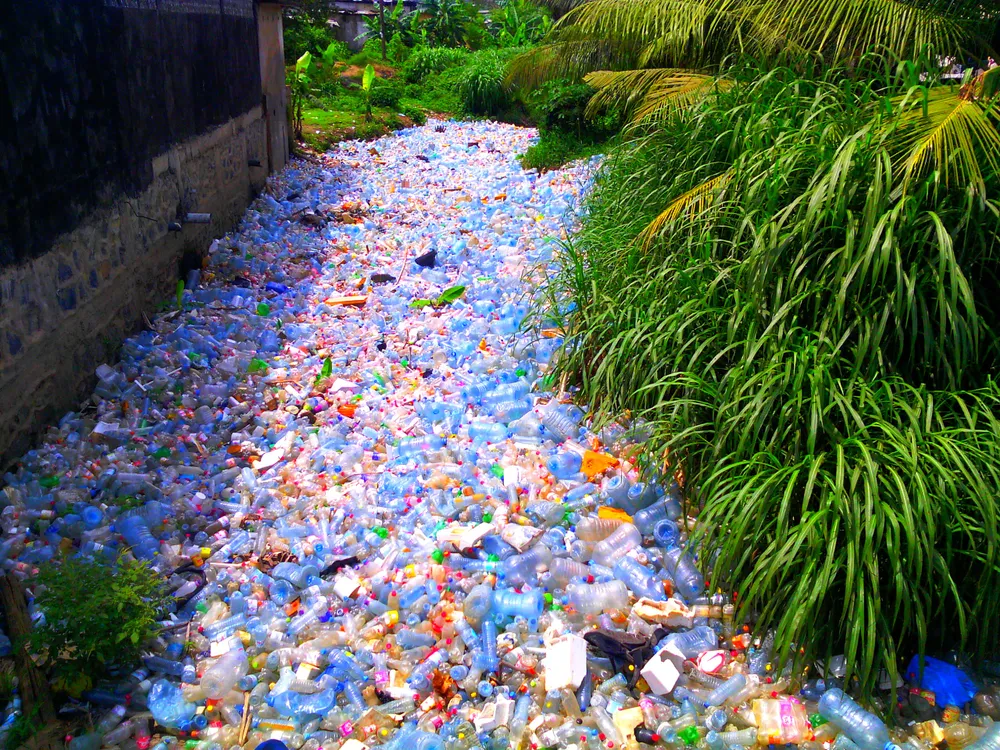
Plastic pollution in Madagascar
Mouenthias via Wikimedia Commons under CC BY-SA 4.0 license
If we were to sort the plastic pollution that invaded the environment in 2020 online, it could circle the Earth more than 1,500 times. Simply thrown in piles, the trash would fill New York’s Central Park in a layer as high as the Empire State Building.
In other words, that’s about 57 million tons (52 million metric tons) of plastic waste that wasn’t disposed of properly — and bits of that trash could now be floating in the ocean, on top of a mountain, or even leaching into your bloodstream. In a new study published in the journal Nature On Wednesday, scientists compiled those numbers, creating the first-ever global inventory of plastic pollution.
“This has never been done before,” says Costas Velis, co-author of the study and an expert in resource efficiency systems at the University of Leeds in England. New scientistThe Madeleine bracelet from .
Researchers used artificial intelligence to model waste management in more than 50,000 municipalities around the world and predict the total amount of plastic entering the environment.
The plastic pollution measured in the study represents only a fifth of the global plastic waste total. But the findings, the authors say, demonstrate how improving access to waste collection services around the world can reduce the scale of the problem.
“Uncollected waste is the largest source of plastic pollution. At least 1.2 billion people live without waste collection services and are forced to ‘self-manage’ their waste, often by dumping it on land, in rivers or burning it in open fires,” said Josh Cottom, lead author of the study and a plastic pollution researcher at the University of Leeds, in a statement.
According to the press release, this “self-managed” plastic waste represents more than two-thirds of modeled plastic pollution. The combustion of plastic has become a major problem: 30 million tons of plastic were burned in 2020 without environmental monitoring, an uncontrolled process that can release carcinogens, pollutant particles and heavy metals that have serious consequences for human health, in addition to greenhouse gas emissions.
The study also identified the largest contributors to plastic pollution worldwide: India ranked first, with 10.2 million tons produced annually; Nigeria ranked second; Indonesia ranked third; and China, which ranked first by other models, ranked fourth. The United States ranked 90th, with more than 52,500 tons of plastic pollution produced annually. Interesting engineeringAccording to Sujita Sinha, the results of this research describe a “waste apocalypse”.
The ranking highlights a significant gap between the Global North and the Global South when it comes to plastic pollution. While low- and middle-income countries produce less plastic waste overall, more of it is disposed of improperly, making it a bigger source of plastic pollution. Even low-income countries with limited plastic pollution are considered hotspots when scientists look at their per capita plastic pollution. High-income countries, on the other hand, produce more plastic waste but have more efficient waste disposal systems, so less of it ends up as pollution.
“But we shouldn’t blame the global South for anything,” Velis told Seth Borenstein of the Associated Press. “And we shouldn’t brag about what we’re doing in the global North.” He added that people’s ability to properly dispose of their waste depends on their government’s ability to provide the necessary services.
Therese Karlsson, a science and technical adviser for the International Pollution Elimination Network, told The Associated Press that the study did not focus enough on the plastic waste trade, whereby rich countries ship their waste to poorer countries. While the study says that trend is declining, Karlsson, who was not involved in the study, disagrees that the overall waste trade is increasing, which she said is likely an indicator that the plastic waste trade is increasing as well.
Scientists are now calling for waste collection to be considered a basic necessity, ahead of negotiations on a global plastic waste treaty scheduled for November in South Korea. The study also coincides with Plastic Overshoot Day, which was scheduled to take place on September 5, the day of the year when the planet’s plastic waste production exceeds the capacity of our waste management systems to handle it.
#Humans #pollute #environment #million #tons #plastic #year #study #finds